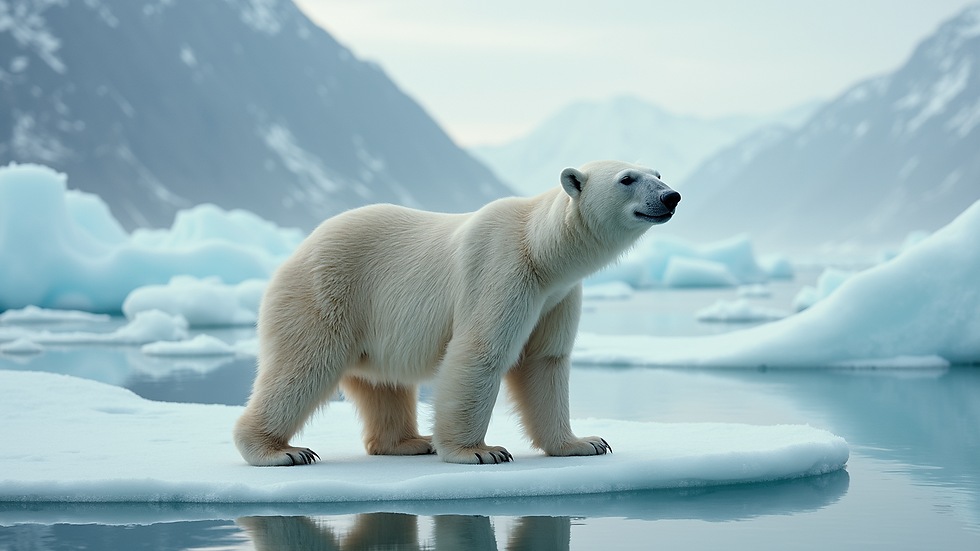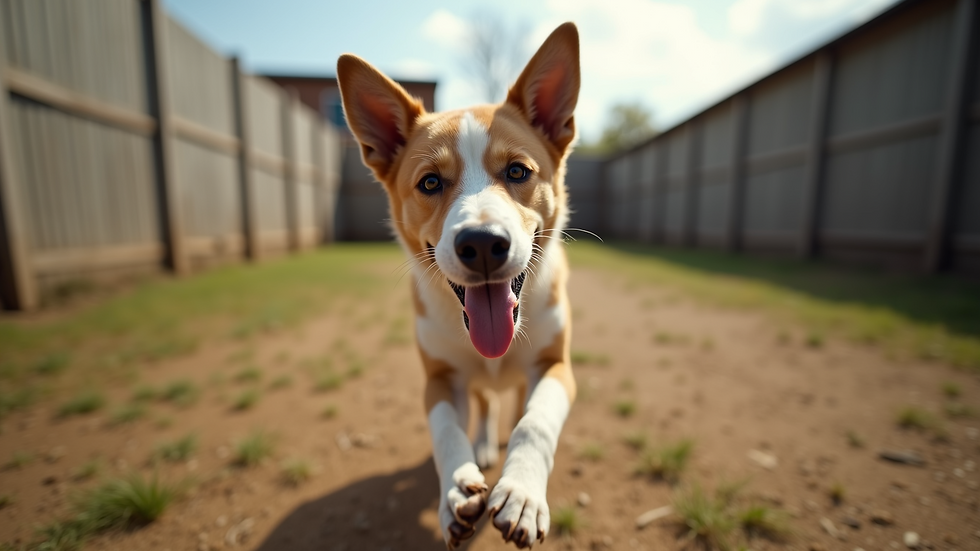Global Warming and Its Impact on Animal Extinction
- juneminiva
- 4 days ago
- 4 min read
Global warming is a pressing issue that affects every corner of our planet. As temperatures rise, the delicate balance of ecosystems is disrupted. This disruption has dire consequences for many species, leading to increased rates of animal extinction. Understanding this connection is crucial for protecting our planet's biodiversity.
The Earth's climate has changed significantly over the past century. Human activities, such as burning fossil fuels and deforestation, have accelerated this change. As a result, global temperatures are rising, leading to severe weather patterns, melting ice caps, and rising sea levels. These changes create challenges for wildlife, pushing many species to the brink of extinction.
The Science Behind Global Warming
Global warming refers to the long-term increase in Earth's average surface temperature. This phenomenon is primarily caused by greenhouse gases, such as carbon dioxide and methane, which trap heat in the atmosphere.
Key Contributors to Global Warming
Fossil Fuels: The burning of coal, oil, and natural gas for energy releases large amounts of carbon dioxide.
Deforestation: Trees absorb carbon dioxide. When forests are cut down, this carbon is released back into the atmosphere.
Agriculture: Livestock farming produces methane, a potent greenhouse gas.
These activities have led to a significant increase in global temperatures, which have risen by about 1.2 degrees Celsius since the late 19th century.
The Impact on Animal Habitats
As temperatures rise, many animal habitats are changing. Some species are struggling to adapt to these new conditions.
Changing Ecosystems
Coral Reefs: Warmer ocean temperatures lead to coral bleaching, which devastates marine life.
Polar Regions: Melting ice caps threaten species like polar bears and seals that rely on ice for hunting and breeding.
Forests: Changes in temperature and precipitation patterns can lead to forest die-offs, affecting species that depend on these ecosystems.
These habitat changes can lead to a decline in food sources and breeding grounds, pushing many species toward extinction.
Species at Risk
Several species are particularly vulnerable to the effects of global warming.
Notable Examples
Amur Leopard: With fewer than 100 individuals left, this species is threatened by habitat loss and climate change.
Sumatran Orangutan: Deforestation and rising temperatures are reducing their habitat, putting them at risk.
Hawksbill Turtle: Rising sea levels and ocean warming threaten nesting sites and food sources.
These species are just a few examples of the many animals facing extinction due to global warming.
The Role of Conservation Efforts
Conservation efforts play a vital role in protecting endangered species.
Strategies for Protection
Habitat Restoration: Replanting trees and restoring wetlands can help revive ecosystems.
Protected Areas: Establishing national parks and wildlife reserves can provide safe havens for endangered species.
Sustainable Practices: Encouraging sustainable agriculture and forestry can reduce habitat destruction.
These efforts can help mitigate the impacts of global warming and protect vulnerable species.
The Importance of Public Awareness
Raising public awareness about global warming and its effects on animal extinction is crucial.
How You Can Help
Educate Yourself and Others: Share information about the impacts of climate change on wildlife.
Support Conservation Organizations: Donating to or volunteering with organizations focused on wildlife protection can make a difference.
Reduce Your Carbon Footprint: Simple actions, like using public transport or reducing energy consumption, can help combat global warming.
By taking these steps, individuals can contribute to the fight against climate change and protect endangered species.
The Future of Our Planet
The future of our planet depends on our actions today.
A Call to Action
Advocate for Policy Changes: Support policies that aim to reduce greenhouse gas emissions.
Engage in Local Conservation Efforts: Participate in local clean-up events or tree-planting initiatives.
Stay Informed: Keep up with the latest research on climate change and its effects on wildlife.
Every action counts. By working together, we can create a sustainable future for both people and wildlife.

The Interconnectedness of Life
The extinction of one species can have a ripple effect on the entire ecosystem.
The Web of Life
Predator-Prey Relationships: The loss of a predator can lead to an overpopulation of prey species, disrupting the balance of the ecosystem.
Plant Pollinators: Many plants rely on specific animals for pollination. The extinction of these animals can threaten plant species and the animals that depend on them for food.
Understanding these connections highlights the importance of protecting all species, not just those that are endangered.
Conclusion: A Shared Responsibility
The fight against global warming and animal extinction is a shared responsibility.
Moving Forward Together
Collaboration: Governments, organizations, and individuals must work together to address climate change.
Innovation: Investing in renewable energy and sustainable practices can help reduce our impact on the planet.
Empowerment: Everyone has a role to play in protecting our planet. By making informed choices, we can contribute to a healthier environment for all living beings.
The time to act is now. Together, we can create a future where both people and wildlife thrive.


コメント